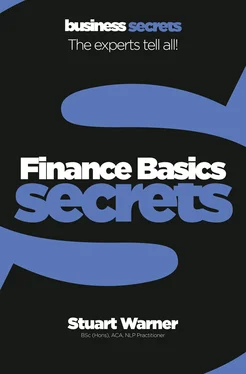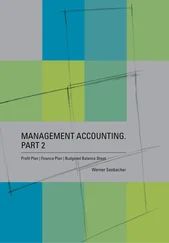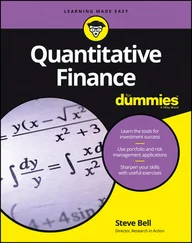Stuart Warner - Finance Basics
Здесь есть возможность читать онлайн «Stuart Warner - Finance Basics» — ознакомительный отрывок электронной книги совершенно бесплатно, а после прочтения отрывка купить полную версию. В некоторых случаях можно слушать аудио, скачать через торрент в формате fb2 и присутствует краткое содержание. Жанр: unrecognised, на английском языке. Описание произведения, (предисловие) а так же отзывы посетителей доступны на портале библиотеки ЛибКат.
- Название:Finance Basics
- Автор:
- Жанр:
- Год:неизвестен
- ISBN:нет данных
- Рейтинг книги:3 / 5. Голосов: 1
-
Избранное:Добавить в избранное
- Отзывы:
-
Ваша оценка:
- 60
- 1
- 2
- 3
- 4
- 5
Finance Basics: краткое содержание, описание и аннотация
Предлагаем к чтению аннотацию, описание, краткое содержание или предисловие (зависит от того, что написал сам автор книги «Finance Basics»). Если вы не нашли необходимую информацию о книге — напишите в комментариях, мы постараемся отыскать её.
Finance Basics — читать онлайн ознакомительный отрывок
Ниже представлен текст книги, разбитый по страницам. Система сохранения места последней прочитанной страницы, позволяет с удобством читать онлайн бесплатно книгу «Finance Basics», без необходимости каждый раз заново искать на чём Вы остановились. Поставьте закладку, и сможете в любой момент перейти на страницу, на которой закончили чтение.
Интервал:
Закладка:
A limited company can be ‘private’ or ‘public’. Most companies, especially small ones, are private and are owned by a small number of shareholders. In the UK, private limited company names end with the suffix ‘Limited’ or ‘Ltd’. The directors of a private limited company are also likely to be the majority shareholders.
Public companies are usually much larger than private compa-companies. Their shares can be sold and purchased on a public stock exchange. In the UK public company names end with the suffix ‘Public Limited Company’ – or ‘PLC’.
This book will be useful to all entities and in particular limited companies which experience the most regulation.
Limited liability is a key advantage for limited companies.
1.2 Find out how a business gets money
The majority of businesses need money to get started. The ability to raise finance is essential to the initial and ongoing success of a business. A lack of finance is one of the main ways that businesses fail.
Imagine you about to start a new business that requires $1 million initial investment. Let’s say this money is needed for premises, a motor vehicle, computer equipment and goods to sell. If you don’t have $1 million, where can you get the money from?
Most entrepreneurs will initially invest their own money when starting a new business. This is known as ‘share capital’ and for limited companies the owners are called ‘shareholders’. ‘Share capital’ is sometimes referred to as ‘equity finance’.
If more money is needed, there are three main options:
1 Raise further equity finance.Ask existing shareholders for more money or find investors who wish to become joint owners/shareholders of the business and contribute to the share capital. As these investors will become joint owners of the business, they will have a say in the running of the business. They will also expect returns on their investment in the form of dividends.
“Never spend your money before you have earned it” Thomas Jefferson, 19th-century American President
2 Borrow money.Typically from a bank or family and friends. This is known as ‘loan finance’ or ‘debt finance’. It is a common route for shareholders who don’t want to share ownership of their business. Equity finance does not have to be repaid, and dividends to shareholders are discretionary. Loan finance, on the other hand, needs to be repaid and will incur interest costs.
3 Use surplus cash generated from operating activities.See Secret 4.5 for more on this. The surplus cash must not have been paid as dividends to shareholders or committed elewhere in the business.
There are many other alternative sources of finance for a business. Examples include leasing assets (as opposed to purchasing assets outright), government grants and even sponsorship. Reading a company’s financial statements should reveal where they have got their money from (Secret 2.5).
A successful financing strategy is just as important as a successful business strategy.
1.3 Find out how a business uses money
If the first thing a business does is raise finance, the next thing it does is to spend it, usually on assets. These are resources owned or controlled by a business and are used to generate money. Assets are generally the biggest investments made by businesses. Both long-term and short-term assets are essential for most businesses.
There are four main categories of assets, as follows:
1 Fixed assets.The term ‘fixed assets’ refers to assets that are a ‘fixed’ item within a business, usually for more than a year (and hence long-term assets). Fixed assets are also referred to as ‘property, plant and equipment’ and sometimes as ‘non-current assets’. They are for continuous use in the business and are essentially used to make money. There are many different types of fixed assets found in businesses. The most common types are land, buildings, machinery, fixtures and fittings, office equipment, computers and motor vehicles.
2 Intangible assets.Intangible assets are also long-term assets. They are non-physical resources and rights owned by a business that offer a competitive advantage or add value to the business. Examples of intangible assets include brands, trademarks and patents.
3 Investments.Many businesses spend their money on investments, which they intend to ‘hold’ for the future and hence are also long-term assets. Investments include assets such as shares held in other companies and rental property.
4 Current assets.The term ‘current assets’ refers to assets that help on a short-term basis, usually for less than a year. These are assets which are traded e.g. inventory, or by their nature ‘liquid’, e.g. cash. Money owed by customers is also a current asset because it is a ‘future benefit’. The customer will pay cash in the future. Money owed by customers is also referred to as ‘debtors’, ‘accounts receivable’, trade receivables’ or more simply ‘receivables’.
Reading a company’s financial statements should reveal what they have spent their money on (Secret 2.5).
Investing money in both long-term and short-term assets is essential for most businesses.
1.4 Appreciate the need for record-keeping
Successful businesses know that accurate record-keeping is not only essential for accounting but also provides infor m ation that can be a key source of competitive advantage.
Accounting and bookkeeping. ‘Accounting’ can be defined as the provision of financial information concerning the results of a business over a period of time. A business needs to ‘account’ for what it has done and accounting is a process of recording, analysing and summarizing commercial transactions. The term ‘bookkeeping’ generally refers to just the recording of transactions.
case studyTom runs a computer services company and understands the benefits of recording, analysing and summarizing all business transactions. The list opposite shows the information about customers that Tom finds useful to record. It is a list that millions of other companies around the world also compile about their customers:
Key contact information
Sales to date
Forecasted sales
Credit rating
Money owed by date
Distribution costs
Discounts offered and taken
Separate legal entity. A fundamental principle of accounting is that a business is a separate entity from its owner. For ‘limited’ companies the concept of separate entity is a legal distinction. As such, business transactions should never be mixed with the personal transactions of the owners, which is also advisable for other business entities. In addition, for ‘limited’ companies there is a statutory requirement to maintain proper accounting records.
Management and financial accounting. Once transactions are recorded they need to be analysed and summarized. ‘Management accounting’ is the use of this data within a business for management information, planning, decision making, and control purposes. ‘Financial accounting’ is the use of this data to report financial results and the latest position of a business to a number of interested parties, for a number of different purposes. See Secret 1.7 for more detail on the differences between financial and management accounting. See Secret 2.9 for more information on the users of accounts.
Users of financial information. All users of financial information require quality information which is both relevant and reliable. Therefore it essential that the transactions which underpin this information are properly recorded, analysed and summarized.
Читать дальшеИнтервал:
Закладка:
Похожие книги на «Finance Basics»
Представляем Вашему вниманию похожие книги на «Finance Basics» списком для выбора. Мы отобрали схожую по названию и смыслу литературу в надежде предоставить читателям больше вариантов отыскать новые, интересные, ещё непрочитанные произведения.
Обсуждение, отзывы о книге «Finance Basics» и просто собственные мнения читателей. Оставьте ваши комментарии, напишите, что Вы думаете о произведении, его смысле или главных героях. Укажите что конкретно понравилось, а что нет, и почему Вы так считаете.












